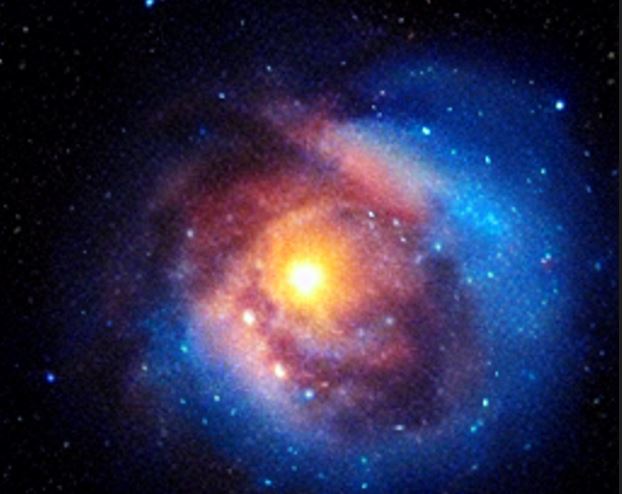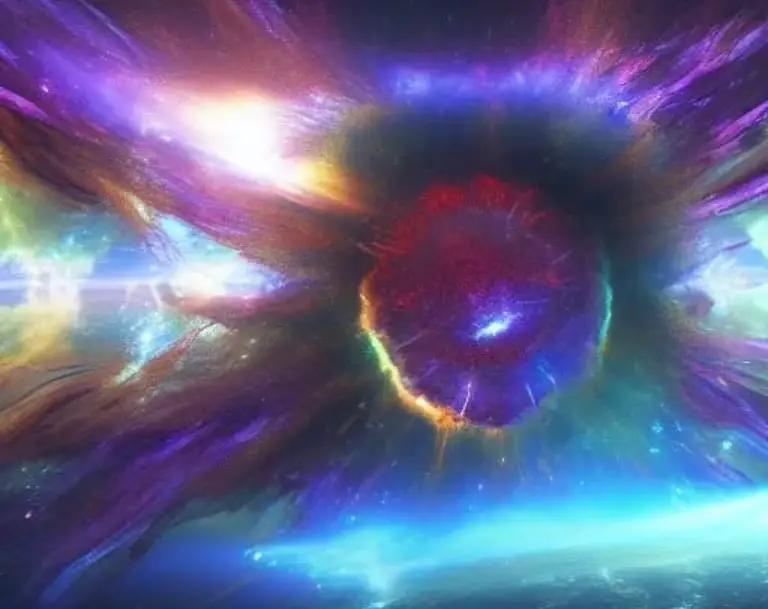A supernova is the set of phenomena resulting from the explosion of a star, which is accompanied by a brief but fantastically large increase in its luminosity.
Seen from the Earth, a supernova therefore often appears as a new star, whereas it actually corresponds to the disappearance of a star.
Supernovae are rare events on a human scale: their rate is estimated at around one to three per century in our Milky Way.
The Hubble and Chandra telescopes photographed the remnant of supernova N49, located 160,000 light years away in the Large Magellanic Cloud galaxy, Tuesday, June 1, 2010. With the new Webb Space Telescope, astronomers may be able to get a better understanding of supernovas.

It should be noted that at our time no supernova had been observed in our Galaxy since the invention of the telescope! The latest was SN 1987A.
They had and still play an essential role in the history of the Universe, because it is during its supernova explosion that the star releases the chemical elements that it has synthesized during its existence – and during the explosion itself — to be diffused in the interstellar medium.
In addition, the supernova shock wave promotes the formation of new stars by initiating or accelerating the contraction of regions of the interstellar medium. It can push the dust clouds to form new systems.
The process that initiates a supernova is extremely brief: it lasts a few milliseconds. As for the supernova phenomenon itself, it can last several months.
At the maximum luminosity of the explosion, the absolute magnitude of the star can reach -19, which makes it an object more luminous by several orders of magnitude than the brightest stars: during this period, the supernova can “radiate more energy” (in physics it is a power) than one, or even several whole galaxies.
This is the reason why a supernova occurring in our own galaxy, or even a nearby galaxy, is often visible to the naked eye, even in broad daylight.
Several historic supernovae have been described at times that are sometimes very ancient; today we interpret these appearances of “new stars” as so many supernovae.
There are actually two quite distinct mechanisms which produce a supernova: the first results from the thermonuclear explosion of a dead star called a white dwarf, the second from the implosion of a massive star which is still the site of reactions nuclear at the time of the implosion.
This implosion is responsible for the dislocation of the outer layers of the star. The first mechanism is called thermonuclear supernova, the second core-collapse supernova.
A third mechanism, still uncertain, but similar to the second, is likely to occur within the most massive stars. It is called supernova by pair production.
Historically, supernovae were classified according to their spectroscopic characteristics. This classification is of little relevance from a physical point of view.

Only so-called type Ia supernovae are thermonuclear, all the others being core-collapse.
The material expelled by a supernova expands into space, forming a type of nebula called a supernova remnant.
The lifespan of this type of nebula is relatively limited, the material being ejected at very high speed (several thousand kilometers per second), the remnant dissipates relatively quickly on an astronomical scale, in a few hundred thousand years.
The Gum Nebula or the Swan Laces are examples of supernova remnants in this very advanced state of dilution in the interstellar medium. The Crab Nebula is an example of a young remnant: the burst of the explosion which gave birth to it reached the Earth less than a thousand years ago.




